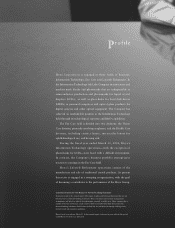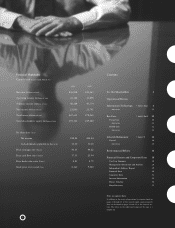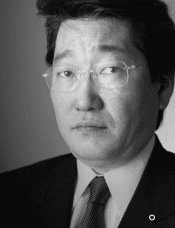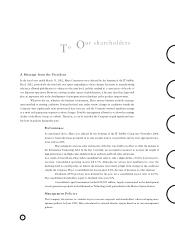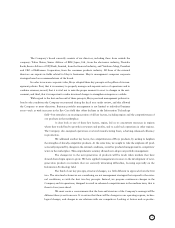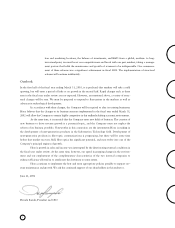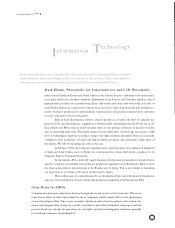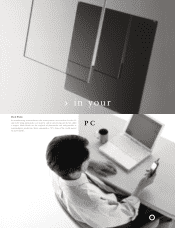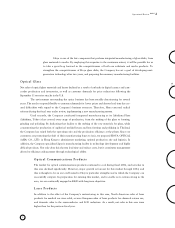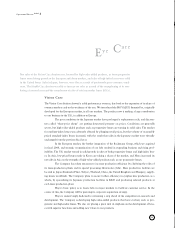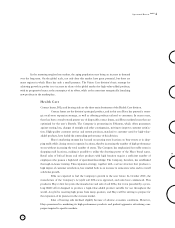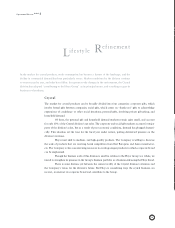Pentax 2002 Annual Report Download - page 6
Download and view the complete annual report
Please find page 6 of the 2002 Pentax annual report below. You can navigate through the pages in the report by either clicking on the pages listed below, or by using the keyword search tool below to find specific information within the annual report.
The Company’s board currently consists of six directors, including three from outside the
company: Takeo Shiina, Senior Advisor of IBM Japan, Ltd., from the electronics industry; Naotaka
Saeki, Senior Advisor of UFJ Bank, Limited, from the financial industry; and Yuzaburo Mogi, President
and CEO of Kikkoman Corporation, from the consumer products industry. All three of the external
directors are experts in fields related to Hoya’s businesses. Hoya’s management composes corporate
strategies based on recommendations of the board.
In order to increase corporate value, Hoya adopted three key precepts as the pillars of its man-
agement policies. First, that it is necessary to properly manage each separate sector of operations and to
combine revenues; second, that it is vital not to miss the proper moment to react to changes in the envi-
ronment; and third, that it is important to make structural changes to strengthen enterprise as a whole.
With regard to the first and second of these precepts, Hoya practiced management policies tai-
lored to the conditions the Company encountered during the fiscal year under review, and this allowed
the Company to meet objectives. Business portfolio management is not limited to individual business
areas—such as with increases in the Eye Care field that offset declines in the Information Technology
field—but extends to an exacting scrutiny of all key factors, including region and the competitiveness of
our products in the marketplace.
A close look at one of those key factors, region, led us to concentrate resources in regions
where they would lead to growth in revenues and profits, and to scale back operations in other regions.
The Company also energized operations at several manufacturing bases, achieving enhanced efficiency
in production.
We addressed another key factor, the competitiveness of Hoya products, by seeking to heighten
the strengths of already-competitive products. At the same time, we sought to take the emphasis off prod-
ucts easily impacted by changes in the external conditions, as well as products losing ground to competitors’
wares in the marketplace. This comprehensive scrutiny allowed us to shape our portfolio management.
The changeover to the next generation of products will be made when markets that have
slowed down begin again to grow. We have applied management resources to the development of next-
generation products in markets that are currently witnessing difficulties, focusing especially on the
Information Technology field.
The third of our key precepts, structural changes, is a little different in approach from the first
two. The structural reforms we are considering are not management strategies that respond to the exter-
nal conditions, as with the first two key precepts. Instead, we propose continuous changes in the
Company and its operations, designed to result in enhanced competitiveness in the medium term, that is
three to four years ahead.
We must create a consciousness that the base and structure of the Company’s earnings will be
different three years from now. It is certain that there will be changes in our operating regions, techno-
logical changes, and changes in our relations with our competitors. Looking at factors such as produc-
4


